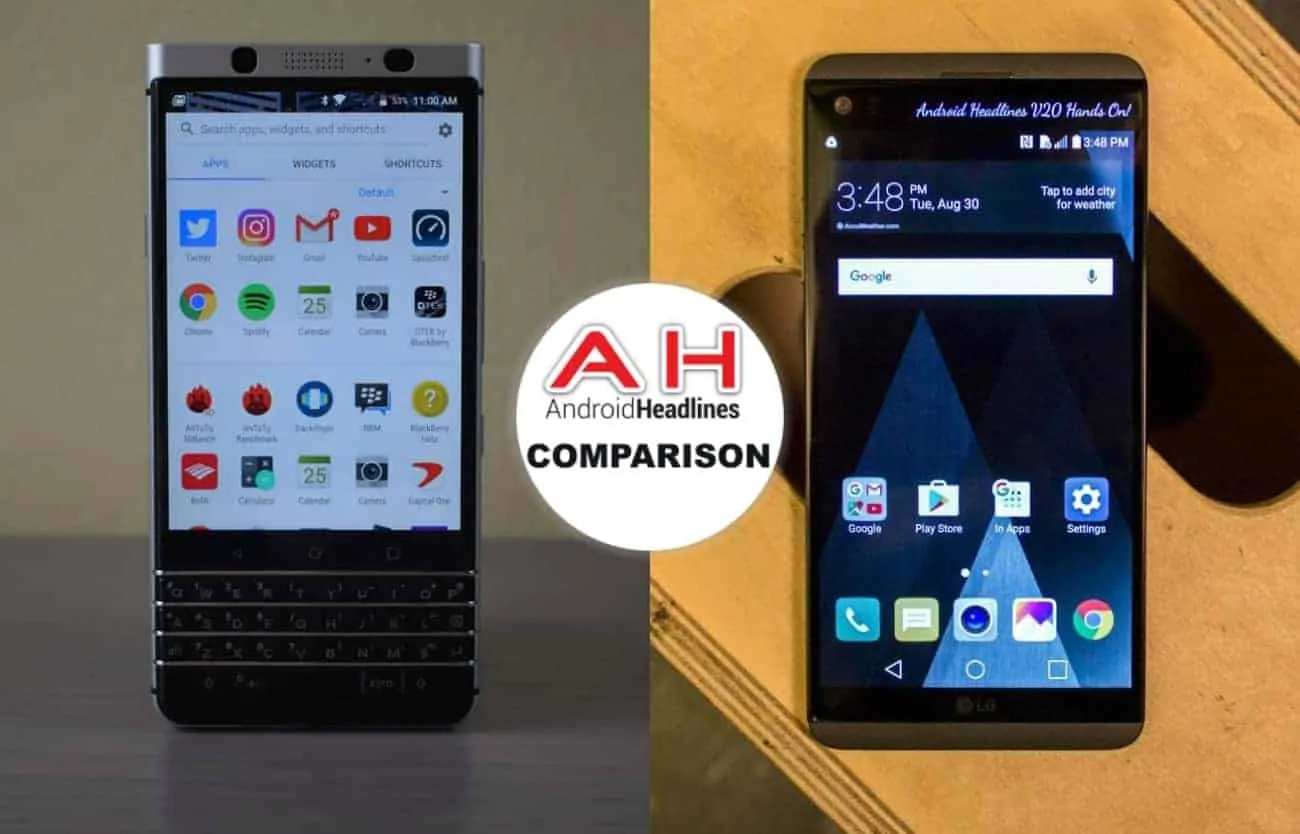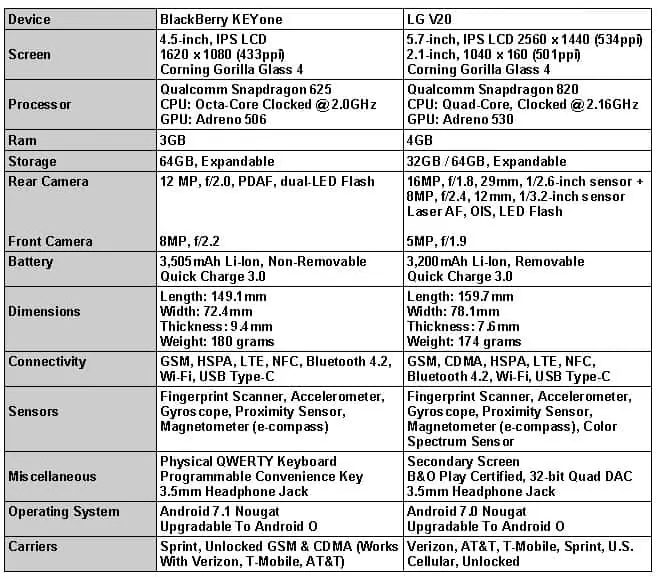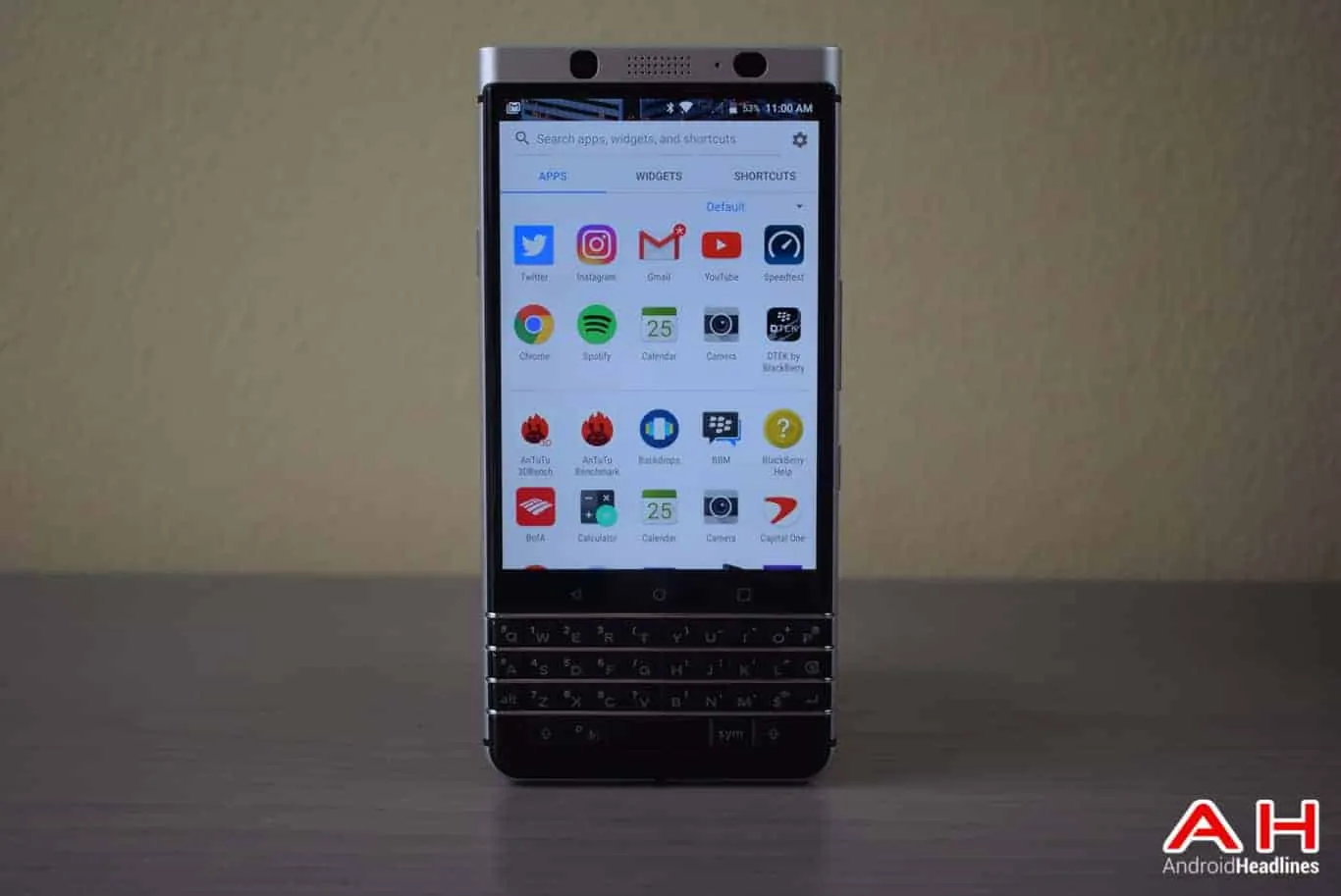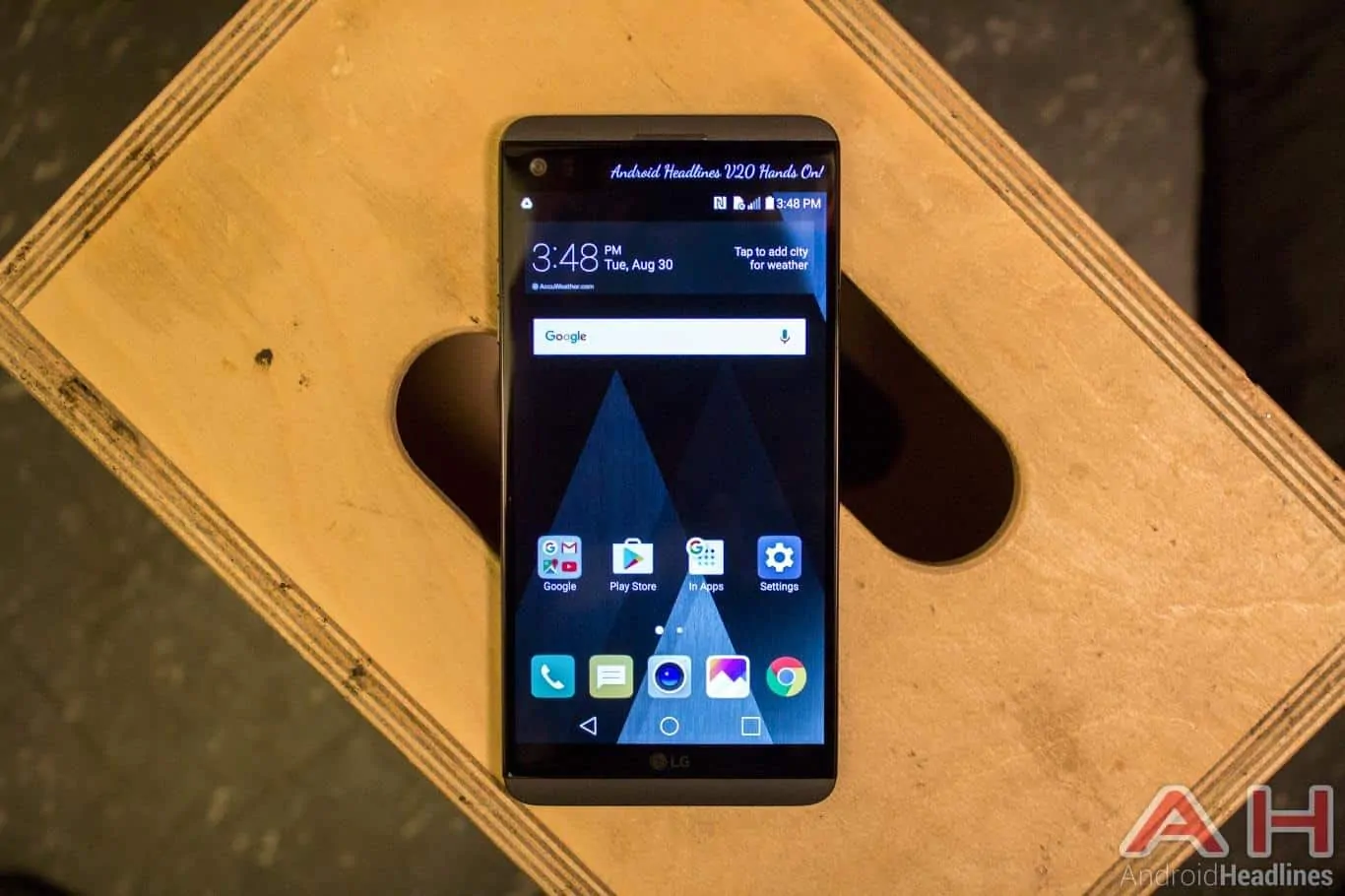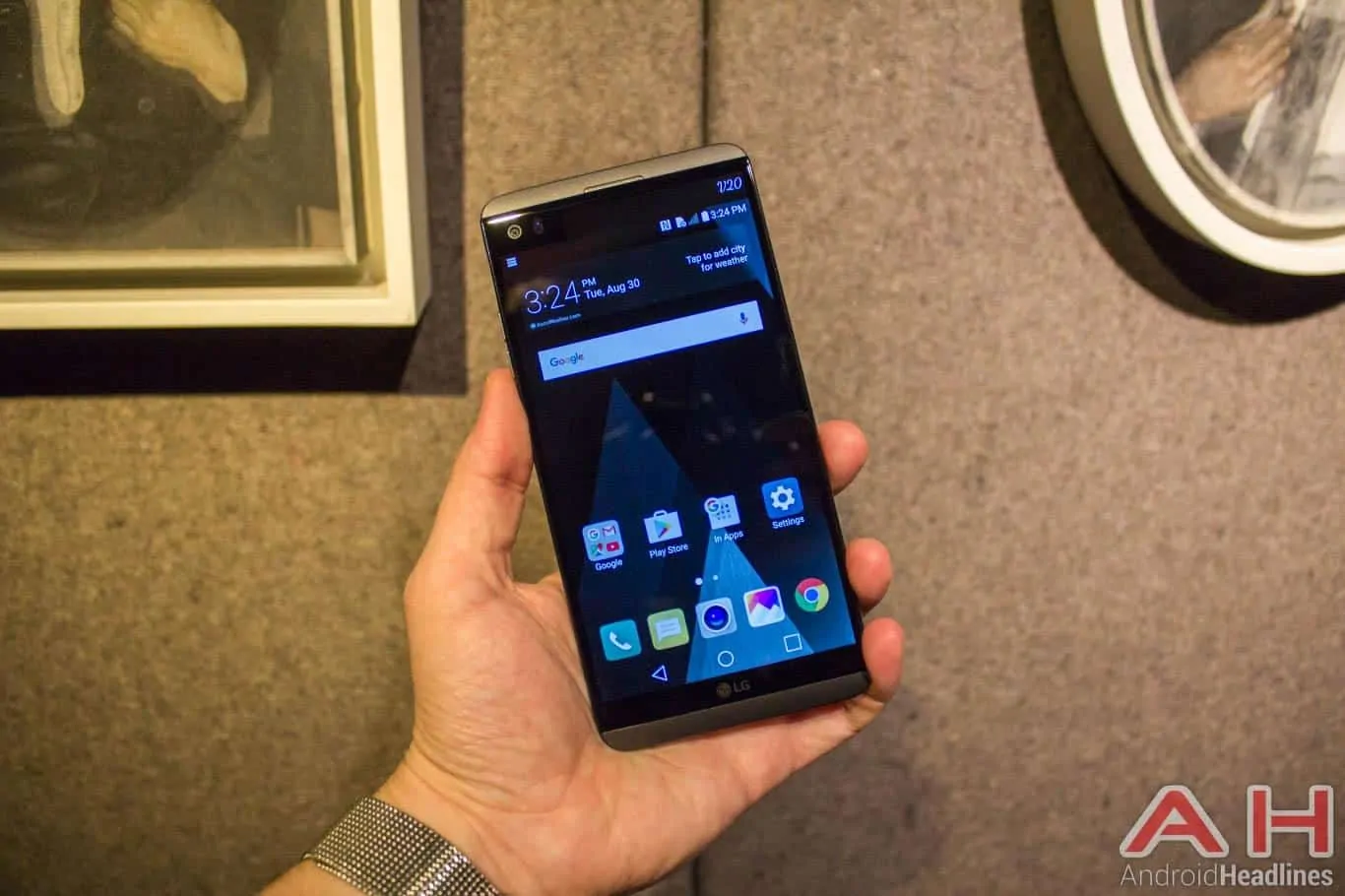Introduction
The BlackBerry KEYone faces off against the LG V20 in today’s head-to-head. While the KEYone is the latest flagship smartphone from the Canadian company that was once the global leader in smartphones, the LG V20 is the second-generation V-series device from the South Korean electronics manufacturer that has been anything but boring with its smartphone designs of late. The two devices both have pretty much all the standard features you’d expect from premium Android smartphones circa 2017, but also include a few quirky but novel design elements that add some specific functionalities to them. Both have already cultivated a dedicated fan-following, so which one is right for you if you’re still sitting on the fence? We’ll try to find that out over the course of this comparison.
Specifications
BlackBerry KEYone
The BlackBerry KEYone needs to be a big hit for the beleaguered Canadian tech company, and if initial reports are anything to go by, it looks like it’s already off to a great start. The KEYone is the second Android device from BlackBerry with a physical keyboard after the PRIV, but unlike its predecessor, it isn’t designed or developed by the Canadian firm. That’s because plagued by diminishing market share and mounting losses from its smartphone business, BlackBerry decided to move away from investing any further into its hardware business, and licensed its brand to Chinese tech company TCL, which now designs, develops and markets BlackBerry-branded devices, while the Canadian firm chips in with the software and services.
The KEYone may not necessarily have cutting edge hardware, but it does have a high-end feel to it in terms of its design. It comes with an all-metal construction with curved edges on all four sides and a soft-touch rubberized back for better grip. On the front, it has the physical keyboard on the bottom, and a 4.5-inch IPS LCD display on top. The screen comes with a resolution of 1620 x 1080 pixels, thanks to its slightly odd 3:2 aspect ratio to accommodate the physical keypad. The device is powered by the Qualcomm Snapdragon 625 SoC that comes with an integrated 64-bit octa-core CPU clocked at 2GHz along with the Adreno 506 GPU. The KEYone ships with 3GB of LPDDR4 RAM and 32GB of built-in storage that’s expandable via a microSD card of up to 256GB in capacity.
The BlackBerry KEYone uses the exact same 12-megapixel primary camera found on the Google Pixel and Pixel XL. It comes with an f/2.0 aperture, phase detection auto-focus (PDAF) and a dual-tone LED flash. The front-facing camera comes with an 8-megapixel sensor with an f/2.2 aperture. The KEYone carries a non-removable 3,505 mAh Li-Ion unit with support for Qualcomm’s Quick Charge 3.0. In terms of software, the device ships with an almost pure version of Android 7.1 Nougat. The BlackBerry KEYone measures 149.1mm in length. 72.4mm in width and 9.4mm in thickness, while weighing in at 180 grams.
LG V20
The LG V20 was officially launched late last year, and its claim to fame is that it was the first device apart from the Google Pixel and Pixel XL to come with Android Nougat pre-installed. It is a feature-rich device that was widely praised in the media for being one of the best phones released last year, and continues to remain one of the best phones money can buy right now. The device comes with two screens, three cameras and a multitude of neat, thoughtful features that you’ll be hard-pressed to find in any other smartphone. Although quite a few vendors have tried the dual-screen trick from time to time, most of them have felt gimmicky more often than not. LG, however, seems to have implemented it much better for the most part, but it’s still not something that you can’t live without.
While the primary display on the LG V20 is a 5.7-inch IPS LCD panel with a WQHD resolution of 2560 x 1440 pixels, the second screen measures just 2.1-inch in size and really, is more of an extension on top of the main display panel, but it operates independently. It comes with a resolution of 1040 x 160 pixels and, can be configured to display app shortcuts, music player controls or quick tools for most-used functions. The device is powered by a Qualcomm Snapdragon 820 which comes with an integrated CPU with 4 custom Kryo cores. While two of them are clocked at 2.15 GHz, the other two are clocked at 2.16 GHz. The device also ships with 4GB of RAM and either 32GB or 64GB of built-in storage that can be expanded by way of a microSD card.
In terms of optics, the LG V20 comes with a dual camera module on the back, including a 16-megapixel sensor with a 29mm focal length, an f/1.8 aperture and a 1/2.6-inch sensor size. There’s also a wide-angle sensor with a 12mm focal length, 1/3.2-inch sensor size and an f/2.4 aperture. Other features include geo-tagging, touch focus, face and smile detection, panorama and HDR mode. As for the front-facing camera, it comes with a single 5-megapixel sensor with an f/1.9 aperture. The device comes with a removable 3,200 mAh Li-Ion battery with support for Qualcomm’s Quick Charge 3.0. In terms of software, the LG V20, as mentioned already, comes with Android Nougat pre-installed. It’s also expected to get updated to Android O going forward.
Connectivity options on the LG V20 include an USB Type-C port for charging and data syncing, but unlike many of its competitors, the device also comes with a 3.5mm audio port for compatibility with older headphones. Sensors on the LG V20 include a rear-facing fingerprint scanner, accelerometer, gyroscope, proximity sensor, magnetometer (e-compass) and color spectrum sensor. The device is fairly large by any yardstick, measuring 159.7mm in length, 78.1mm in width and 7.6mm in thickness while weighing in at a rather hefty 174 grams. The LG V20 also comes with an NFC chip for compatibility with mobile payment platforms like Android Pay and an infrared blaster that allows you to use it as a remote.
… And The Winner Is …
The Final Word
To be completely honest, the BlackBerry KEYone and the LG V20 are targeted at completely different sets of buyers, so it probably isn’t entirely fair to compare them against one another. However, both devices are priced fairly similarly, so it makes sense to put them side-by-side to see which one deserves your hard-earned money. Both devices have their own pros and cons, but the only reason the LG pips the BlackBerry to the post in our comparison, is because in spite of its quirks, it still appeals to a much larger target audience than its competitor. The LG V20 is a nice, well-rounded smartphone that isn’t completely without flaws, but it’s certainly something worth buying if you want your device to stand out from the sea of Galaxys around you. On the other hand, the KEYone comes with an almost-perfect implementation of a physical QWERTY keyboard on an Android smartphone, and is a must-buy for anyone feeling nostalgic about the good ol’ BlackBerrys.
Buy The BlackBerry KEYone Buy The LG V20
